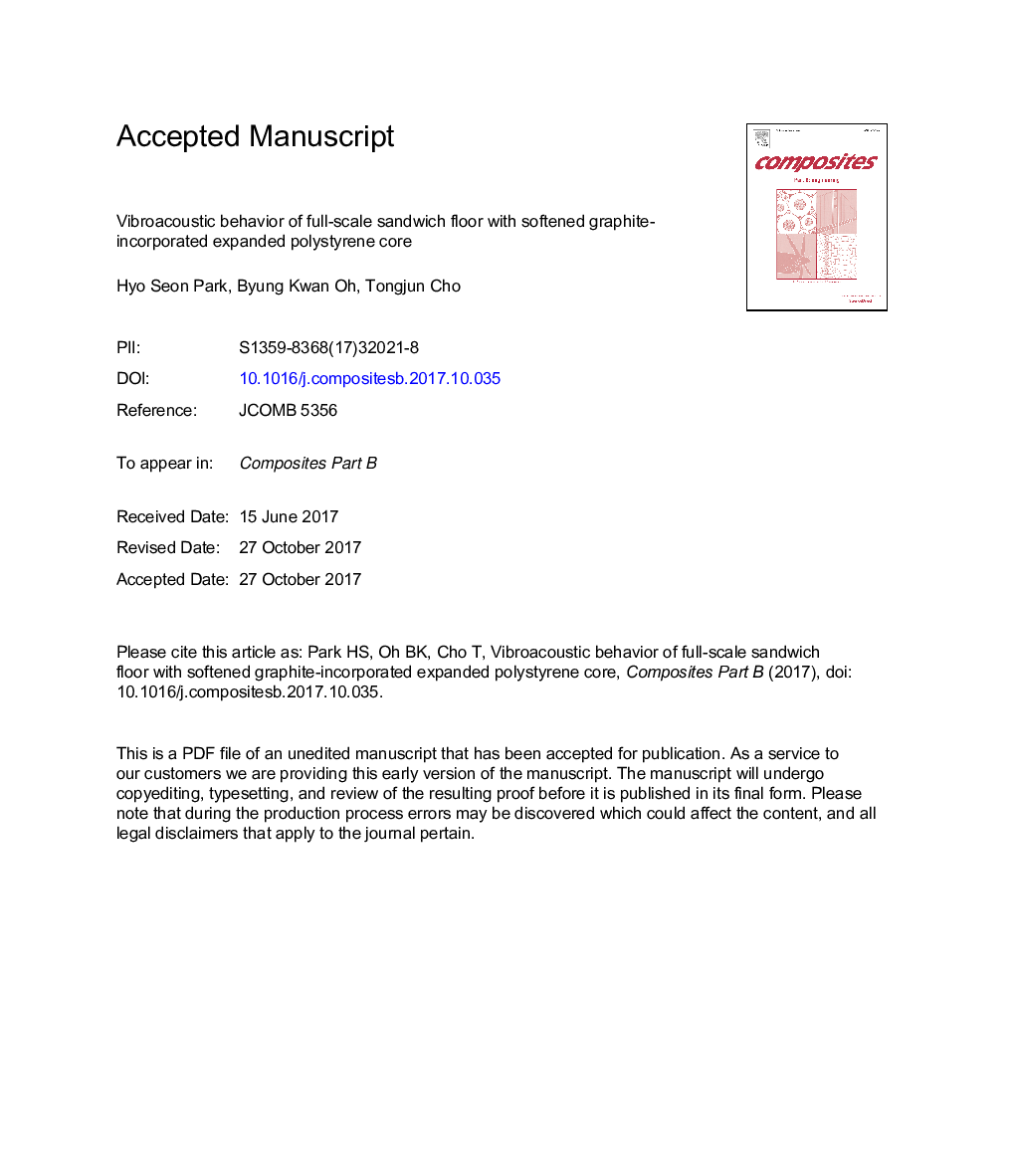| Article ID | Journal | Published Year | Pages | File Type |
|---|---|---|---|---|
| 7212323 | Composites Part B: Engineering | 2018 | 44 Pages |
Abstract
Previous laboratory-scale research has shown that the post-yield softening of graphite-incorporated expanded polystyrene (EPS) foam has the unique property of vibroacoustic insulation for low-frequency floor impacts. However, the core softening causes decoupled behaviors in the sandwich floor, and thus, the improvement in insulation may deteriorate at some frequencies. To understand how core softening actually affects the insulation performance in real-life building structures, the vibroacoustic behaviors of sandwich floors with softened graphite-incorporated EPS cores was studied through a full-scale experimental investigation. The results indicate that core softening lowers the degree of coupling between the upper and lower plates, shifts the coupled and decoupled modes of the floor to lower frequencies, and develops decoupled modal wave fields in the upper plate. The frequency and amplitude of the sound produced by modal behavior of the sandwich floor vary in accordance with the vibration response of the lower plate, which depends on the changes in the structural wave field with core softening. Furthermore, the shift in the structural modal frequency with core softening affects the modal coupling between the structural and acoustic domains.
Keywords
Related Topics
Physical Sciences and Engineering
Engineering
Engineering (General)
Authors
Hyo Seon Park, Byung Kwan Oh, Tongjun Cho,
